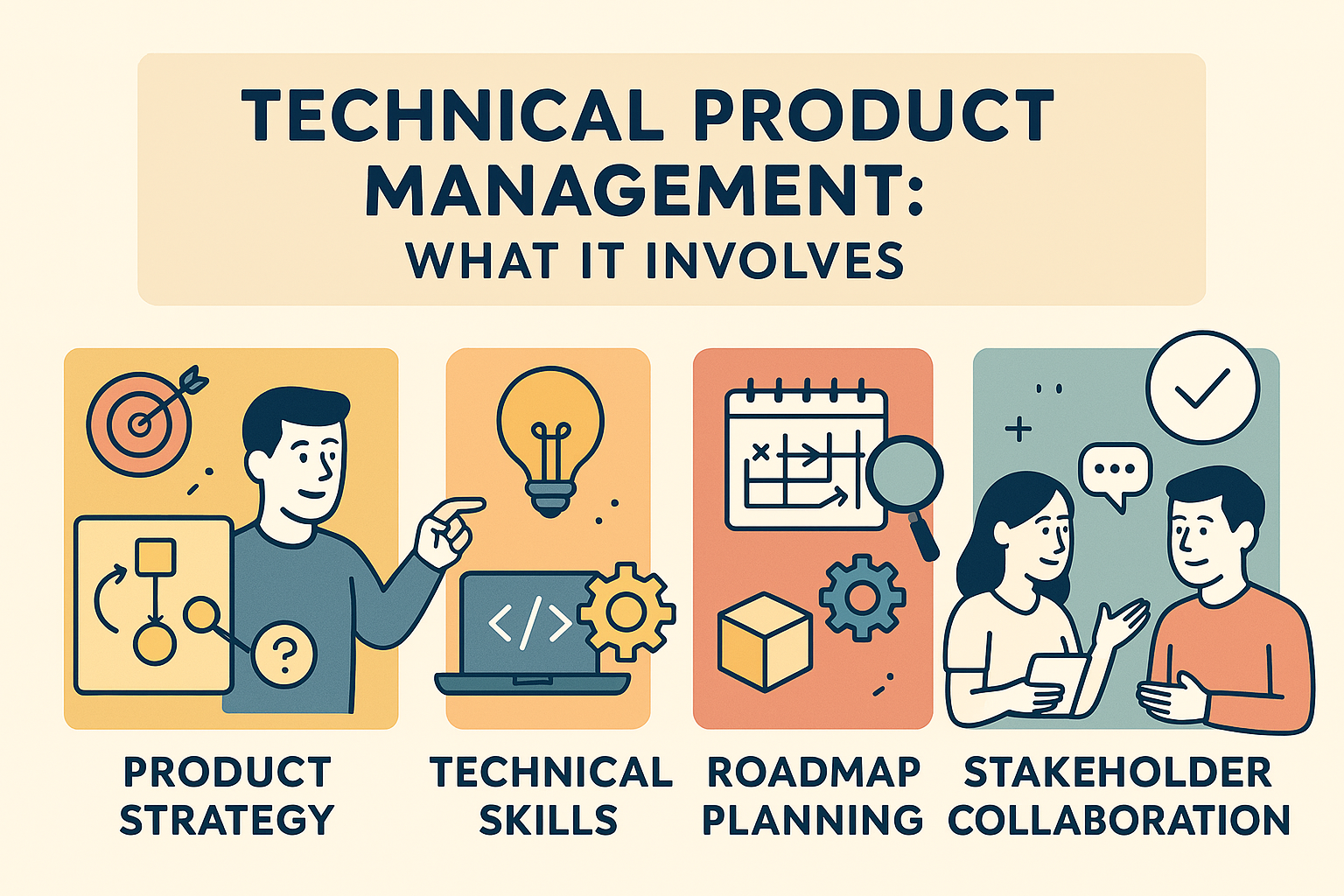Great products don’t just need vision—they need translation. Technical Product Managers (TPMs) are the translators, bridging the space between high-level business strategy and the granular reality of engineering execution.
What Is a Technical Product Manager?
Unlike traditional product managers who focus primarily on market needs, customer requirements, and business models, Technical Product Managers bring a deeper understanding of the technology stack behind the product. They’re fluent in both tech and strategy. They might not be writing production code, but they speak the language of developers, understand system architecture, and can anticipate technical constraints.
A TPM doesn’t just ask ―What should we build? — they also ask, ―Can we build this efficiently, securely, and at scale?
Core Responsibilities
1. Product Planning and Road mapping
Translate product vision into technically feasible milestones.
Align engineering sprints with business goals without over-promising or under-scoping.
2. Technical Specification Writing
Draft detailed product requirement documents (PRDs) that developers can act on.
Include edge cases, error handling, API considerations, and system behaviors.
3. Backlog Management and Prioritization
Break down features into tickets and manage trade-offs between short-term deliverables and long-term technical health.
Prioritize work that may include invisible but critical tasks like refactoring or infrastructure upgrades.
4. Cross-Team Collaboration
Act as a bridge between engineering, design, data science, QA, DevOps, and business.
TPMs ensure the technical side is fully aware of the why, while stakeholders understand the how and when.
5. Technical Decision Support
Weigh in on build buy decisions, architecture design, and system scalability.
Work with tech leads to evaluate feasibility and time estimation with clarity and realism.
6. Risk Management and Problem Solving
Identify technical bottlenecks and potential scalability issues early.
Make trade-offs when resources are limited, without compromising critical paths.
Must-Have Skills for a TPM
Systems Thinking: Understand how parts of the product interconnect and influence each other.
Tech Fluency: Know your APIs, databases, CI/CD pipelines, and cloud platforms—not at dev level, but with working depth.
User Empathy: Never lose sight of who the product serves—even while in the weeds of data modeling.
Prioritization: Balance urgent fixes with long-term tech debt repayment.
Clear Communication: Convert business intent into developer-ready plans—and vice versa.
Conclusion
Technical Product Management is a hybrid role. It’s not about being the most technical person in the room or the most strategic. It’s about being the clearest translator between those two worlds.
In fast-moving teams, TPMs enable clarity in complexity—ensuring the product moves forward with technical integrity and business value intact. When done right, TPMs become the unsung heroes who keep the vision grounded and the roadmap realistic—without losing innovation in the process.





